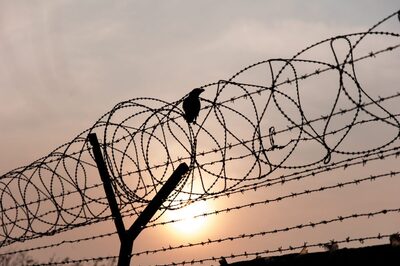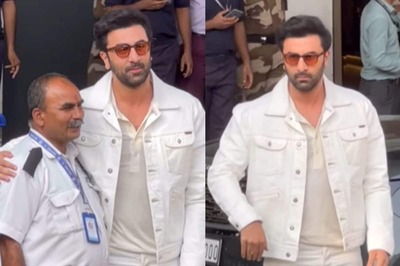
views
New Delhi: In 2016, the secretary of Sri Lanka Thowheed Jamaat (SLTJ), Abdul Razik, was arrested on charges of inciting racism. Until then and even after the arrest, the outfit was associated with violence, but to a fairly low degree — the SLTJ was known for vandalising Buddhist structures and using abusive language against Buddhist leaders. But the past notion was completely undone on Sunday.
On April 21, powerful explosions struck in quick succession at three hotels in capital city Colombo.The Cinnamon Grand was hit around 8:30 in the morning, followed by Shangri-La half an hour later.
Three churches were also targeted: Colombo's historic St Anthony's Shrine, the St Sebastian's church in the town of Negombo — north of the capital — and the Zion Church in the east-coast town of Batticaloa. Later in the day, there were two more blasts, out of which one hit another hotel in Colombo. The Sri Lankan government confirmed that seven suicide bombers carried out the attacks.
A day after the bloodiest Easter, the Sri Lankan government announced that National Thawheed Jamaat was behind the attacks and further added that 24 people had been arrested in connection with the attacks. One cannot find much about the group as it has been named. Further questions have been raised on the use of “National” along with the word “Thowheed” (monotheism) — the usage of both words together being redundant.
There have been also been papers which have pointed out the NTJ is a splinter group of the SLTJ. A study by the International Centre For Ethnic Studies, titled The Chronic and the Entrenched: Ethno-Religious Violence in Sri Lanka, states that “the NTJ is possibly the most militant of the Thawheed Jamaat groups. Violent evictions of the Abdur Rauf group from Kattankudy in 2000 and 2006 are attributed to those who eventually formed the NTJ.”
With very little social media presence, not much is known about the NTJ. However, the SLTJ is a radical Salafist Islamist group which was formed in a Muslim majority town, Kattankudy, in the Batticaloa District of the Eastern Province in 2014. Counter terrorism expert Ajai Sahni points out that the organization has no record of any previous involvement in terrorism.
“For it suddenly escalated to the level of these attacks is quite incredible. SLTJ has been active as an extremist, fundamentalist Islamic organization; not as a terror organization,” he said.
A report by S Raja Ratnam School of International Studies, in a December 2015 report, mentions SLTJ as a group gaining prominence and drawing its influence from the Tamil Nadu Thowheed Jamaat (TNTJ).
Interestingly, the report also mentions that “a majority of Sri Lankan Muslims are against this movement. On 7 November 2015, many Muslims conducted demonstrations on the streets of Colombo to protest against the planned visit of the extremist Tamil Nadu Muslim leader Moulvi P Jainul Abideen (also known as ‘PJ’) and the founder of TNTJ.”
Anne Speckhard, director at the International Centre for Study of Violent Extremism, had a different take on the kind of influence that SLTJ had. In her assessment, the group seemed to be directed or instructed by ISIS or Al-Qaeda or some outfit with more knowledge on Wahabism.
Interestingly, in 2016, the Sri Lankan government had informed Parliament that 32 Sri Lankan Muslims from well-educated and elite families had joined the Islamic State in Syria and vowed that the government would clamp down on extremists.
“These type of groups follow the militant jihad ideology and believe that suicide attacks constitute Islamic martyrdom,” she told News18, adding that they believed in rewards of martyrdom which include “instant access to paradise upon death” and also believe that it is an obligation for them to bring about an Islamic State which for these groups is often global in nature.
The rise of radicalism in Sri Lanka (over the years Buddhist extremists have attacked Muslims and Christians) has not garnered a lot of attention over the last couple of years, prime reason being that most of this radicalisation has not escalated to the level of militancy.
In fact, Speckhard was in Colombo in February earlier this year where Sri Lankan intelligence officers at a conference quizzed the experts, include Speckhard, about the rise of the SLTJ. “The general opinion was that it was a small militant outfit but compared to what the Tamil Tigers did, they seemed less important. Not anymore, though,” she added.
Speckhard is not the only one who is finding the sudden rise of the SLTJ a difficult phenomenon to comprehend. Sahni said that the organisation had been involved in a few instances of vandalism and use of abusive language but for it to suddenly escalate was difficult to understand. “I have never known of an organisation that has gone from zero to such a scale of activity. The acquisition of capacities and capabilities is necessarily gradual. Here we have an outfit which the government is claiming has executed these attacks, but without any history of gradual build-up,” he said.




















Comments
0 comment